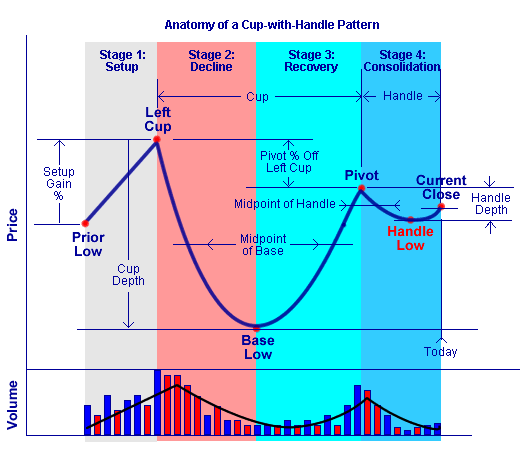How to Choose the Right Cup Stock Material?
When it comes to selecting the ideal cup stock material for your paper cups, understanding the composition of the materials used is crucial. Cup stock, a specialized form of paperboard tailored for manufacturing paper cups, typically consists of a blend of paper and polyethylene, a versatile plastic. This combination ensures the cup stock material’s durability and liquid resistance, essential qualities for paper cups used in various applications. The polyethylene coating plays a pivotal role in enhancing the cup stock material’s ability to withstand moisture and maintain beverage temperature. Factors such as the thickness of the paperboard and the quality of the polyethylene coating significantly influence the overall performance and reliability of the cup stock material. Choosing the right cup stock material is essential for ensuring that paper cups meet safety standards, provide excellent insulation, and deliver a satisfying drinking experience.
What is cup stock material made of?
Cup stock material typically consists of multiple layers of paperboard laminated together to ensure robustness and durability. The outermost layer is coated with a thin layer of polyethylene, which serves as a barrier against liquids, effectively preventing leakage. This polyethylene coating not only provides excellent liquid resistance but also enhances the printability of the cup stock, enabling vivid and high-quality designs to be applied to the cups.
The paperboard used in cup stock is predominantly derived from wood pulp, which undergoes processing to form thin sheets. These sheets are then laminated together, creating a resilient material suitable for crafting paper cups. Cup stock material is engineered to maintain strength while being sufficiently flexible to mold into various cup shapes without risk of tearing or collapsing. This combination of strength, flexibility, and liquid resistance ensures that paper cups made from cup stock material meet rigorous standards for performance and reliability in diverse beverage and food service applications.
Importance of polyethylene coating on cup stock
The polyethylene coating on cup stock material is essential for the optimal functionality of paper cups. It serves a dual purpose, acting as a moisture barrier that effectively prevents any liquids from permeating through the cup. This crucial feature ensures that the cups maintain their integrity, remaining leak-proof and suitable for securely holding both hot and cold beverages.
Moreover, the polyethylene coating significantly enhances the printability of the cup stock. By creating a smooth and even surface, the coating facilitates the application of vibrant and intricate designs onto the cups. This capability is particularly valuable for businesses aiming to showcase their branding effectively and create visually appealing cup designs that attract and engage customers. The combination of moisture resistance and enhanced printability makes polyethylene-coated cup stock material indispensable for producing high-quality, functional, and aesthetically pleasing paper cups in various food and beverage service settings.
Factors affecting the quality of cup stock material
Several factors can affect the quality of cup stock material. When choosing the right cup stock, it’s essential to consider these factors to ensure that you are getting a high-quality and reliable material for your paper cups.
- Thickness: The thickness of the cup stock material can affect the durability and sturdiness of the cups. Thicker cup stock is generally more robust and can withstand heavier usage, making it suitable for high-demand environments such as coffee shops and restaurants.
- Weight: The weight of the cup stock refers to the amount of material used per unit area. Heavier cup stock provides a more substantial and premium feel to the cups, while lighter cup stock may be more cost-effective for businesses operating on a tight budget.
- Stiffness: The stiffness of the cup stock material determines how well the cup maintains its shape and structure. Cups made from stiffer cup stock tend to be more rigid and less prone to collapsing or bending. This is especially important for cups that need to hold hot beverages.
- Absorbency: Cup stock material with low absorbency is crucial for preventing liquids from penetrating the cups. High-quality cup stock should have minimal absorbency, ensuring that the cups remain sturdy and leak-proof even when holding liquids for an extended period.
- Printability: The printability of the cup stock refers to how well it accepts and retains ink during the printing process. Cup stock with excellent printability allows for vivid and detailed designs on the cups, making them visually appealing and memorable for customers.
In conclusion, a thorough understanding of cup stock material is pivotal when selecting the appropriate type for your paper cups. The composition of paper and polyethylene, alongside key factors influencing cup stock quality, directly impacts the durability, functionality, and overall visual appeal of the cups. By carefully evaluating these elements, you can confidently choose cup stock material that aligns with your specific requirements, ensuring your paper cups not only perform reliably but also leave a favorable impression on your customers. This informed decision-making process is crucial for delivering high-quality products that meet both practical and aesthetic expectations in various food and beverage service environments.
Section title: Factors to Consider When Choosing Cup Stock
When it comes to choosing the right cup stock, there are several important factors to consider. The quality and characteristics of the cup stock material can greatly impact the durability, printability, and overall performance of the cups. In this section, we will explore some key factors that you should take into account when selecting cup stock.
How does cup stock thickness affect cup durability?
Cup stock thickness plays a crucial role in determining the durability and strength of the cups. Thicker cup stock generally provides better insulation and sturdiness, making it suitable for hot beverages. Thicker cup stock also helps to prevent leaks and enhances the overall structural integrity of the cups. On the other hand, thinner cup stock is more flexible and lightweight, making it suitable for cold beverages and minimizing the environmental footprint. It is important to strike a balance between thickness and functionality based on the type of beverages you serve and your target market.
Why is printability important in cup stock selection?
Printability is a critical factor to consider when choosing cup stock, particularly if you intend to customize and brand your cups. Opting for cup stock with excellent printability enables vibrant and high-quality graphics, logos, and designs to be seamlessly applied to the cups. This capability is especially valuable for businesses and events seeking to enhance brand visibility and attract customers through visually appealing cups.
When selecting cup stock, prioritize options that offer superior ink adhesion and color vibrancy. These features ensure that your customized cups not only maintain their aesthetic appeal but also leave a lasting impression on customers. By choosing cup stock with exceptional printability, you can effectively leverage your packaging as a powerful marketing tool, reinforcing brand identity and enhancing the overall customer experience.
Environmental considerations when choosing cup stock material
In today’s environmentally conscious landscape, choosing eco-friendly cup stock material has become a paramount concern for businesses. When making your selection, it’s crucial to not only assess the environmental impact of the material but also consider its disposal options. Opting for cup stock sourced from renewable and sustainable origins, such as paper sourced from responsibly managed forests and compostable materials, plays a significant role in reducing the ecological footprint associated with cup production.
Additionally, prioritize cup stock material that is free from harmful chemicals and coatings, as these substances can pose environmental risks during disposal. Considering the end-of-life options for cup stock, such as recycling or composting, is essential to further minimize waste and environmental impact. Choosing recyclable or compostable cup stock supports efforts in waste reduction and aligns with sustainable practices.
In summary, when choosing the ideal cup stock material, it’s essential to evaluate factors like thickness, printability, and environmental sustainability. Understanding how cup stock thickness affects cup durability helps in selecting the most suitable option for specific needs. Printability remains crucial for businesses aiming to customize and enhance their brand through visually appealing cup designs. By prioritizing environmental considerations in cup stock selection, businesses demonstrate a commitment to sustainability, effectively reducing their environmental footprint and meeting the expectations of eco-conscious consumers.
Comparing Different Types of Cup Stock
Cup stock is the fundamental material used in the production of paper cups. It is typically made from a combination of paper and a polyethylene (PE) coating, which provides the necessary strength and protection against leaks. However, not all cup stock is created equal. There are different varieties available, each with its own advantages and disadvantages. In this section, we will compare some of the different types of cup stock, including laminated cup stock, sustainable options for eco-friendly cup production, and key factors to consider when selecting cup stock for specific needs.
Laminated Cup Stock
Laminated cup stock is a popular choice for producing paper cups. It is made by adhering multiple layers of paper together, with the PE coating sandwiched in between. This type of cup stock offers several advantages, including:
- Enhanced Durability: Laminated cup stock is known for its superior strength and durability. The multiple layers provide added protection against leaks and spills, making it suitable for hot and cold beverages.
- Excellent Insulation: The laminated structure of this cup stock helps to maintain the temperature of the beverage inside the cup, keeping hot drinks hot and cold drinks cold for longer periods.
- Enhanced Printability: Laminated cup stock provides a smooth and even surface, allowing for high-quality printing and vibrant graphic designs. This is crucial for branded and promotional cups.
Despite its benefits, laminated cup stock also has some drawbacks to consider:
- Environmental Impact: The multiple layers of paper and the PE coating make laminated cup stock less eco-friendly compared to other options. The production and disposal of these cups can contribute to landfill waste.
- Cost: Laminated cup stock tends to be more expensive than other types of cup stock. This may impact the overall production cost of paper cups.
Sustainable Options for Eco-Friendly Cup Production
In recent years, there has been a growing demand for eco-friendly alternatives to traditional cup stock. Several sustainable options are now available for eco-conscious cup production, including:
- Recycled Cup Stock: Made from post-consumer waste, recycled cup stock reduces the environmental impact of cup production. It helps to divert waste from landfills and conserves valuable resources like water and energy.
- Compostable Cup Stock: Compostable cup stock is made from renewable and biodegradable materials, such as plant-based PLA (polylactic acid). These cups can break down into nutrient-rich compost when disposed of properly in commercial composting facilities.
- PLA-Coated Cup Stock: Traditional cup stock with a PE coating has been a challenge for recycling facilities. PLA-coated cup stock offers a more sustainable alternative, as PLA is derived from renewable resources like cornstarch and can be easily processed in bio-plastics recycling streams.
When considering sustainable cup stock options, it’s important to assess their environmental impact throughout their entire lifecycle, including raw material sourcing, manufacturing processes, and end-of-life disposal.
Key Factors to Consider When Selecting Cup Stock
When choosing the right cup stock for your specific needs, there are several factors to consider:
- Thickness: Thicker cup stock tends to provide better insulation and durability. It can withstand hot liquids without becoming flimsy or soggy. However, it’s important to strike a balance, as excessively thick cup stock may increase costs.
- Weight: Cup weight is directly related to the amount of material used. A heavier cup stock may offer better heat retention and sturdiness but could also result in higher production costs.
- Stiffness: Cup stiffness affects how the cup feels in the hand and how well it holds its shape. Cups with high stiffness are less likely to collapse or spill when filled with liquid.
- Absorbency: The absorbency of cup stock determines how well it resists moisture and prevents leaks. High-quality cup stock should be able to hold liquid without compromising the integrity of the cup.
- Printability: If you’re looking to create custom branded cups, printability is a crucial factor to consider. Look for cup stock that provides a smooth and even surface for vibrant and high-quality printing.
By carefully considering these key factors, you can choose the right cup stock that meets your specific needs in terms of functionality, appearance, and environmental impact.
In conclusion, when it comes to choosing the right cup stock, it’s important to consider the advantages and disadvantages of laminated cup stock, explore sustainable options for eco-friendly cup production, and assess the key factors that influence cup stock quality. By making an informed decision on cup stock selection, you can ensure that your paper cups meet both your business requirements and your commitment to sustainability.
Cup Stock Comparison
| Type of Cup Stock | Advantages | Disadvantages |
|---|---|---|
| Laminated | Enhanced Durability, Excellent Insulation | Environmental Impact, Higher Cost |
| Recycled | Reduces Environmental Impact, Conserves Resources | – |
| Compostable | Biodegradable, Nutrient-Rich Compost | – |
| PLA-Coated | More Sustainable for Recycling Facilities | – |
Key Factors in Cup Stock Selection
| Factor | Description |
|---|---|
| Thickness | Thicker cup stock provides better insulation and durability while striking a balance with functionality and cost. |
| Weight | Cup weight affects heat retention and production costs. |
| Stiffness | Cup stiffness influences how the cup holds its shape and resists collapsing or spilling. |
| Absorbency | High-quality cup stock should have low absorbency to prevent leaks and maintain cup integrity. |
| Printability | Consider the printability of the cup stock for customization and branding purposes. |
By carefully considering these factors, you can choose the cup stock that best meets your specific needs in terms of functionality, appearance, and environmental impact.
FAQs about How to Choose the Right Cup Stock:
What is cup stock material made of?
To determine what cup stock material is made of, you need to look at the multiple layers of paperboard laminated together, with a thin layer of polyethylene coating for liquid resistance and printability.
Why is the polyethylene coating important in cup stock?
The polyethylene coating on cup stock material serves as a moisture barrier, preventing liquid leakage, and enhancing printability for vibrant cup designs.
What factors impact the quality of cup stock material?
Factors affecting the quality of cup stock material include thickness, weight, stiffness, absorbency, and printability, each influencing durability, sturdiness, and visual appeal.
How does cup stock thickness affect cup durability?
Cup stock thickness impacts cup durability, with thicker stock providing better insulation and sturdiness, balancing functionality based on beverage type and environmental impact.
Why is printability crucial in cup stock selection?
Printability plays a pivotal role in cup stock selection, enabling vibrant and high-quality designs, logos, and graphics that leave a lasting impression on customers and enhance brand visibility.
In conclusion, the selection of the right cup stock material is pivotal in creating durable and eco-friendly cups. A comprehensive understanding of materials, coupled with consideration of various factors and comparison of options, facilitates informed decision-making. The inclusion of a polyethylene coating enhances cup stock quality, while factors such as thickness and printability directly influence cup durability and design appeal. Opting for sustainable and laminated cup stock options provides environmentally friendly solutions.
By carefully weighing the advantages and disadvantages and prioritizing specific needs, businesses can simplify the process of selecting the ideal cup stock material. This approach ensures the production of cups that not only meet quality standards but also align with environmental sustainability goals, offering both durable performance and eco-conscious outcomes.





